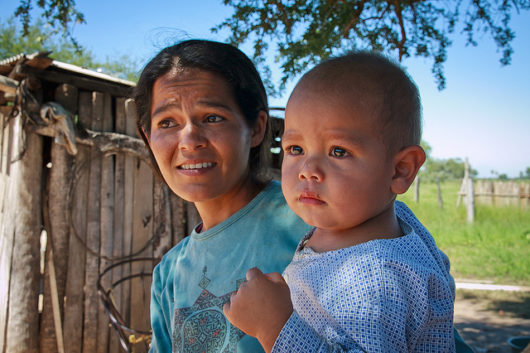Top 10 Facts About Living Conditions in Paraguay

According to the World Bank report in 2017, Paraguay has achieved impressive economic and shared prosperity over the last 15 years. From 2014 to 2017, Paraguay’s economy grew by 4.5 percent per year on average. In 2015, the middle class made up 38 percent of the total population, almost doubling since 2003.
For Paraguay’s poor, though, living conditions have remained difficult. Indeed, the country ranks fourth in extreme poverty, after Honduras, Guatemala and Nicaragua, according to a 2016 ECLAC report. In the article below, top 10 facts about living conditions in Paraguay are presented.
Top 10 Facts About Living Conditions in Paraguay
- Inequality is widespread. Though the country’s GINI coefficient, that indicates economic inequality, has dropped from 0.51 to 0.47, there is still a significant gap between rich and poor Paraguayans. According to the General Statistics Surveys and Census Bureau (DGEEC), the poorest 40 percent of Paraguayans earn only 12.5 percent of the nation’s revenue, while the richest 10 percent earn 37.1 percent of the total income.
- Underemployment is high and working conditions are poor. In 2017, underemployment was recorded at 19 percent, while 20 percent of Paraguayans worked less than 30 hours per week. In the Chaco region of Paraguay, region dominated by large-scale cattle agricultural facilities, some workers characterized their working conditions as a form of slave labor.
- Small-scale farmers are losing their jobs due to the big agricultural companies. Almost 90 percent of the land belongs to just 5 percent of landowners. The rural-urban economic gap is the result of large-scale agriculture steadily monopolizing the market in Paraguay. Studies have confirmed that, between 1991 and 2008, when the last National Agricultural Census was conducted, the number of farms and homesteads covering less than 100 hectares has shrunk, while those between 100 and 500 hectares has risen by almost 35 percent, and massive plantations covering more than 500 hectares are up by almost 57 percent. In late March 2017, 1,000 farmers converged on Asunción, country’s capital, in an annual march, demanding agrarian reform.
- Paraguayan democracy is lacking in social components. It consists almost exclusively to ensure that institutions function, elections are held regularly and transparently. A steady stream of scandals has revealed widespread fraud and corruption.
- One-fifth of the people who live in Asunción live in slums. Although complete official accounting of informal settlements is not available, the National Housing Bureau, SENAVITAT, estimates that there are 1,000 slum areas around the city. Slums along the flood-prone riverbanks of the city sometimes house up to 100,000 people. There has been a dramatic increase in the production of social housing for low-income families living in Asunción. In 2016, the Ministry built more than 10,000 low-income housing units, compared to less than 2,000 units built in 2014.
- Paraguayans face hunger and malnutrition. Only 6 percent of agricultural land is available for domestic food production, while 94 percent is used for export crops. According to the Food Security Index, around 10 percent of children under the age of 5 currently suffer from stunting. Nearly 27 percent of pregnant women are underweight, while 30 percent are overweight.
- Educational attainment is lacking. The 2016-2017 Global Competitive Index of the World Economic Forum ranked the overall quality of Paraguay’s primary education system at the 136th place out of 138 countries. Around 65 percent of children do not complete secondary education which is one of the highest dropout rates in Latin America. The latest 2017 household survey showed that about 5 percent of the adult population, or roughly 280,000 people, are still illiterate. This number has not decreased over the past decade.
- The rates of poverty and extreme poverty among indigenous people are at 75 percent and 60 percent, respectively. Factors such as corruption, the concentration of land ownership and environmental degradation combined with institutional weaknesses hinder progress in alleviating poverty and create obstacles for the indigenous people to maintain access to their fundamental rights, such as water, education and health care. The rate of chronic malnutrition among the indigenous population is 41.7 percent. Some indigenous communities have seen improvements, though, in regards to increased food security. A food-security cash-transfer program, Tekoporã, expanded to cover more indigenous population- from 3 percent in 2013 up to nearly 70 percent in 2018.
- Health care is not accessible to everyone. An estimated 40 percent of the population is unable to afford health care of any kind. Around 7 percent have private health coverage and 20 percent are covered by the health services of the social security institute, the Instituto de Previsión Social. The rest depend on the public health system.
- Paraguay has made giant leaps in increasing access to clean drinking water. The country triumphantly achieved almost complete access to safe drinking water among its rural population, from 51.6 percent in 2000 to 94 percent in 2017.
These 10 facts about living conditions in Paraguay provide a snapshot of the experience of Paraguay’s poor and exemplify that economic growth does not always translate to improved living conditions for everyone.
Photo: Flickr
